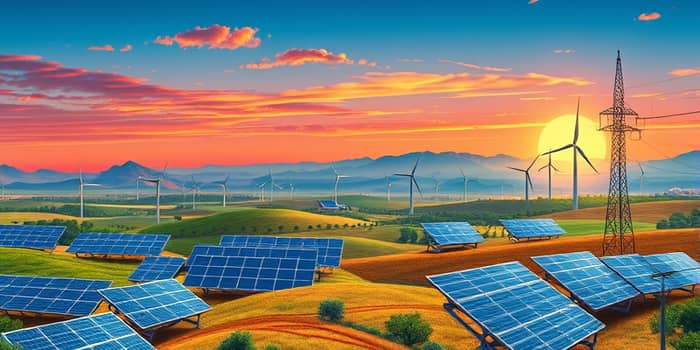
As the world races to curb carbon emissions and stave off the worst impacts of climate change, the way we fund and deploy energy infrastructure has become as critical as the technologies themselves. In 2025, the global energy mix still leans heavily on fossil fuels, but the tide is shifting. Despite forecasts of a 50/50 split between fossil and non-fossil sources by 2050, current trajectories fall short of meeting the Paris Agreement goals. Without bold financial commitments now, we risk locking in a dangerous warming pathway of 2.2°C by century’s end.
Electricity, more than any other energy form, holds the key to decarbonization. Demand is set to double by 2060, climbing from 21% to 43% of total energy use. To achieve this while slashing emissions, the share of fossil fuels powering electricity must plummet from 59% to just 4%. This monumental shift hinges on securing capital for renewables, grids, storage, efficiency and next-generation technologies.
Today’s energy landscape is defined by rapid growth in renewables and persistent reliance on oil, coal and gas. While wind and solar have surged from 4% to 15% of global electricity over the past decade, that progress alone cannot deliver net zero emissions across sectors in time. Meanwhile, electricity demand growth creates both opportunities and challenges: more power means more clean technologies must be financed and integrated at an unprecedented scale.
Global energy investment this year is expected to total $3.3 trillion, with clean energy attracting twice as much capital as fossil fuels. Of that, $2.2 trillion flows into renewables, nuclear, grids, storage, low-emission fuels, efficiency and electrification, while $1.1 trillion props up oil, gas and coal. Solar leads the charge with a projected $450 billion in 2025, making it the largest single investment category.
Meanwhile, nuclear power is experiencing a renaissance: investment is up 50% over five years, reaching $70 billion in 2025 as new plants and small modular reactors advance. Yet even these robust figures remain insufficient; clean energy funding must ramp up further to double the pace of investment needed to meet mid-century targets.
Global policy landscapes are reshaping the flow of capital into energy. In the U.S., revisions to incentives like the Inflation Reduction Act have introduced uncertainty, yet strong policy signals persist elsewhere. China remains the dominant force in renewables deployment and clean-tech manufacturing, exporting panels and turbines that underpin installations from Southeast Asia to Africa. Europe, while navigating competitiveness concerns, continues to champion green investments, especially in hard-to-decarbonize sectors.
Across the Global South, affordable Chinese technologies accelerate adoption, even as fossil fuel consumption edges upward. Energy security—ensuring reliable domestic energy supplies—drives nations to build local capacity and diversify supply chains, reinforcing the case for onshore renewables and storage assets.
The backbone of a clean energy future lies in upgraded grids, smart infrastructure and novel technologies. Massive grid expansion and modernization are required to handle variable renewable output, while storage solutions and demand-response systems ensure stability. Behind-the-meter innovations empower households and businesses to generate and store their own power, helping to democratize energy access.
Despite record flows into clean energy, gaps remain perilously wide. Energy efficiency measures, crucial for reducing demand and cutting emissions, receive just a fraction of the funding required—investments must nearly triple to hit climate targets. Electrification will raise electricity demand even as renewables expand, so displacing fossil fuels must be prioritized, not merely meeting new consumption.
Regulatory shifts, trade tensions and volatile incentives create risks for investors and developers. New rules limiting foreign supply chains, especially in the U.S., add layers of complexity and potential cost overruns. Bridging these divides will demand stable policy frameworks and global cooperation.
A successful energy transition must uplift communities, create jobs and ensure equitable access. From coal regions pivoting to manufacturing clean-tech components, to rural areas gaining electricity for the first time, this shift can be a force for social good. Collaboration among governments, financial institutions, and civil society is critical to allocate capital where it delivers both climate and human benefits.
The decisions made today about where and how to deploy capital will echo for decades. Stakeholders must move beyond incremental shifts, embracing bold financing models, green bonds, public-private partnerships and blended finance structures. Only then can we unlock the full potential of clean energy, addressing global climate risks collectively and building a resilient energy future for generations to come.
References





